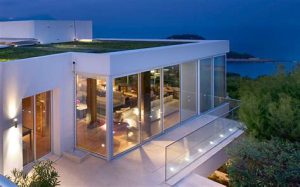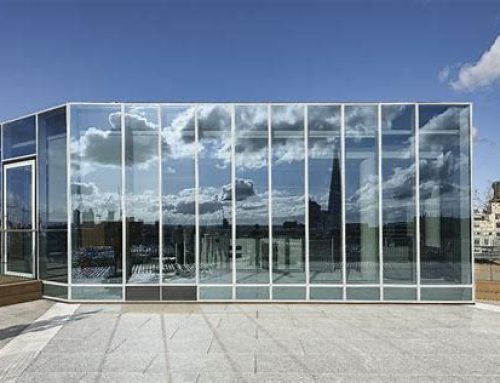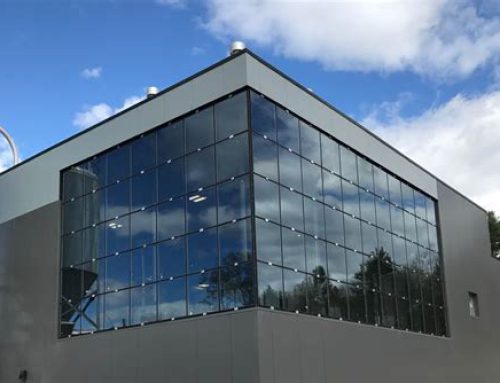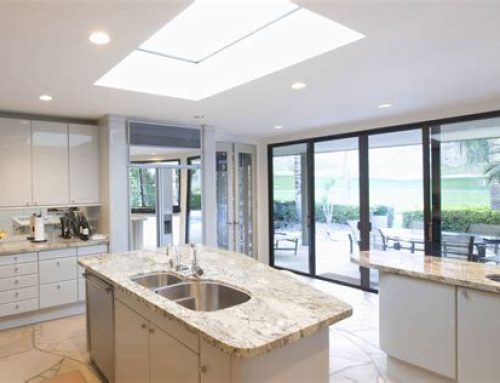Exterior glass walls residential

Exterior glass walls residential ,In the realm of contemporary architecture, the concept of transparency has undergone a profound evolution. No longer confined to mere windows or skylights, architects are increasingly turning to exterior glass walls to redefine spatial boundaries and establish a seamless connection between indoor and outdoor living spaces. From sleek urban dwellings to serene countryside retreats, the incorporation of glass walls has become a hallmark of modern residential design, offering a myriad of benefits that extend far beyond aesthetics.
Aesthetic Elegance:
The allure of exterior glass walls lies in their ability to infuse a sense of elegance and sophistication into residential architecture. By seamlessly integrating with surrounding landscapes, glass walls serve as canvases that frame picturesque views, allowing natural light to flood interiors and create an ambiance of serenity and openness. Whether overlooking a bustling cityscape or nestled amidst verdant foliage, these walls blur the distinction between indoor and outdoor realms, fostering a harmonious relationship between inhabitants and their environment.
Maximizing Natural Light:
One of the most significant advantages of exterior glass walls is their capacity to maximize the influx of natural light into interior spaces. Unlike traditional opaque walls, which can create a sense of enclosure and darkness, glass walls dissolve barriers, ushering in sunlight to illuminate living areas throughout the day. This abundant natural light not only reduces reliance on artificial lighting but also enhances the overall mood and well-being of occupants, fostering a healthier and more uplifting living environment.
Seamless Integration with Nature:
In an era marked by a growing appreciation for sustainability and eco-conscious design, exterior glass walls offer an ideal solution for seamlessly integrating residential structures with their natural surroundings. By erasing the boundaries between indoor and outdoor spaces, these walls invite inhabitants to immerse themselves in the beauty of nature, fostering a deeper connection to the environment and promoting sustainable living practices. Additionally, the thermal efficiency of modern glass technologies ensures optimal energy performance, minimizing heating and cooling costs while reducing environmental impact.
Spatial Expansion and Flexibility:
Beyond their visual appeal and environmental benefits, exterior glass walls afford homeowners a unique opportunity to expand and customize their living spaces according to their lifestyle preferences. Unlike conventional walls, which dictate rigid spatial configurations, glass walls provide a sense of flexibility and versatility, enabling seamless transitions between interior rooms and outdoor patios, gardens, or pool areas. This spatial fluidity not only enhances the functionality of residential layouts but also promotes a sense of freedom and adaptability, allowing inhabitants to tailor their living environments to suit evolving needs and activities.
Challenges and Considerations:
While the incorporation of exterior glass walls undoubtedly offers a multitude of advantages, it is essential for homeowners and architects to consider certain challenges and factors before implementation. These may include:
- Privacy Concerns: The transparency of glass walls may raise privacy concerns, particularly in densely populated urban areas or where neighboring structures are in close proximity.
- Maintenance Requirements: Glass surfaces require regular cleaning and maintenance to preserve their clarity and aesthetics, especially in regions prone to dust, pollution, or inclement weather.
- Insulation and Energy Efficiency: To ensure optimal thermal performance and energy efficiency, it is crucial to select high-quality insulated glass units (IGUs) and employ effective glazing techniques to minimize heat loss or gain.
- Cost Considerations: The installation of exterior glass walls may entail higher upfront costs compared to traditional construction methods, due to the specialized materials and expertise required. However, the long-term benefits in terms of aesthetics, energy savings, and overall quality of life often justify the initial investment.
Embracing the Future:
As technological advancements and architectural innovations continue to redefine the possibilities of design, the future of exterior glass walls in residential architecture appears brighter than ever. Emerging technologies such as dynamic glass, which allows for adjustable transparency and shading levels, promise to further enhance the functionality and energy efficiency of glass-enclosed spaces. Similarly, the integration of smart home systems and automation features enables homeowners to seamlessly control lighting, temperature, and privacy settings with the touch of a button, offering unparalleled convenience and customization.
Moreover, the evolution of sustainable building practices and materials is driving the development of eco-friendly glass solutions that prioritize energy conservation and environmental stewardship. From low-emissivity coatings that enhance thermal performance to innovative recycling techniques that minimize waste, the quest for greener alternatives underscores the commitment of architects and designers to creating responsible and resilient living spaces for generations to come.
Inspiring Design Possibilities:
Beyond their practical advantages, exterior glass walls inspire a wealth of design possibilities that challenge traditional notions of space and form. Architects are increasingly incorporating sculptural elements, such as curved or faceted glass panels, to create striking visual compositions that engage the senses and spark creativity. Similarly, the use of structural glazing systems and frameless installations allows for uninterrupted panoramic views and a sense of weightlessness that defies gravity, evoking a sense of wonder and awe.
Furthermore, the interplay of light, shadow, and reflection inherent to glass surfaces opens up a world of artistic expression, inviting designers to explore the poetic potential of transparency and translucency. Whether through the manipulation of daylight to create dynamic patterns or the integration of multimedia projections for immersive experiences, the versatility of glass as a medium for artistic experimentation knows no bounds.
Overcoming Challenges:
While the allure of exterior glass walls is undeniable, their implementation is not without challenges. Architects and homeowners must navigate considerations such as privacy concerns, maintenance requirements, insulation, and cost. However, advancements in architectural technology and building materials are continually addressing these challenges, making exterior glass walls more accessible and practical than ever before.
Privacy concerns can be mitigated through thoughtful design strategies such as the strategic placement of landscaping, the use of frosted or textured glass, or the incorporation of interior shading systems. Additionally, innovations in self-cleaning glass coatings reduce the maintenance burden associated with keeping glass walls pristine, while improved insulation technologies ensure energy efficiency and comfort year-round. Though initial costs may be higher, the long-term benefits of energy savings and enhanced quality of life often justify the investment in exterior glass walls.
Tailored Solutions:
Every architectural project presents unique opportunities and challenges, and the integration of exterior glass walls is no exception. From urban high-rises to suburban residences, each context requires a tailored approach that considers factors such as climate, site orientation, and aesthetic preferences.
In urban environments, where space is at a premium and privacy concerns are heightened, architects may opt for a combination of opaque and transparent elements to strike a balance between openness and enclosure. In contrast, rural settings offer expansive vistas and opportunities for seamless indoor-outdoor living, allowing architects to design glass walls that dissolve boundaries and celebrate the surrounding landscape.
Sustainable Practices:
In an era of increasing environmental awareness, sustainability has become a paramount consideration in architectural design. Fortunately, exterior glass walls offer numerous opportunities to promote sustainability and reduce the ecological footprint of residential buildings.
By maximizing natural light and ventilation, glass walls minimize the need for artificial lighting and mechanical HVAC systems, reducing energy consumption and greenhouse gas emissions. Additionally, advancements in glass manufacturing and recycling processes have made it possible to produce high-performance glass with lower environmental impact.
Conclusion:
In the realm of residential architecture, exterior glass walls represent a bold exploration of transparency, connectivity, and sustainability. From their ability to blur the boundaries between inside and outside to their capacity for maximizing natural light and enhancing spatial flexibility, these walls offer a myriad of benefits that enrich the lives of occupants and elevate the built environment.
As architects continue to push the boundaries of design innovation and embrace the principles of sustainability, exterior glass walls will remain a defining feature of contemporary residential architecture. Through thoughtful integration and meticulous attention to detail, these walls will continue to inspire awe and admiration, shaping the way we live, work, and interact with the world around us for generations to come, Exterior glass walls residential , Exterior glass walls residential , Exterior glass walls residential.





Leave A Comment